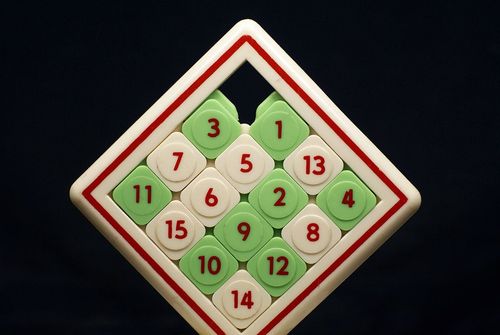Square Space

Square Space
9/25/2022
link
summary
This article discusses the origins and popularity of the Fifteen Puzzle, a sliding puzzle game that became a cultural phenomenon in the late 19th century. The puzzle consists of 15 numbered tiles on a 4x4 grid, with one empty space to allow for movement. The article explores how the puzzle was invented by Noyes Chapman, its rise in popularity, and the various strategies and algorithms developed to solve it. It also delves into the puzzle's connection to mathematics and its enduring appeal as a creative and challenging game. Overall, the article provides an insightful look into the history and significance of the Fifteen Puzzle.
tags
puzzles ꞏ mathematical puzzles ꞏ history of puzzles ꞏ recreational mathematics ꞏ fifteen puzzle ꞏ sliding puzzle ꞏ combinatorial puzzles ꞏ problem-solving ꞏ logic puzzles ꞏ brain teasers ꞏ puzzle games ꞏ game theory ꞏ mathematics ꞏ recreational games ꞏ spatial reasoning ꞏ mathematical thinking ꞏ game design ꞏ critical thinking ꞏ problem-solving skills ꞏ educational games ꞏ cognitive skills ꞏ mathematical patterns ꞏ pattern recognition ꞏ mathematical logic ꞏ mathematical paradox ꞏ mathematical creativity ꞏ puzzle-solving strategies ꞏ puzzle-solving techniques ꞏ puzzle-solving tips ꞏ problem-solving methods ꞏ puzzle enthusiasts ꞏ math lovers ꞏ puzzle addiction ꞏ mathematical challenges ꞏ analytical thinking ꞏ cognitive development ꞏ educational psychology ꞏ recreational activities ꞏ brain training ꞏ mental agility ꞏ mental fitness ꞏ logic and reasoning ꞏ math education ꞏ educational resources ꞏ learning through play ꞏ mathematical concepts ꞏ educational benefits ꞏ brain exercises ꞏ jstor articles